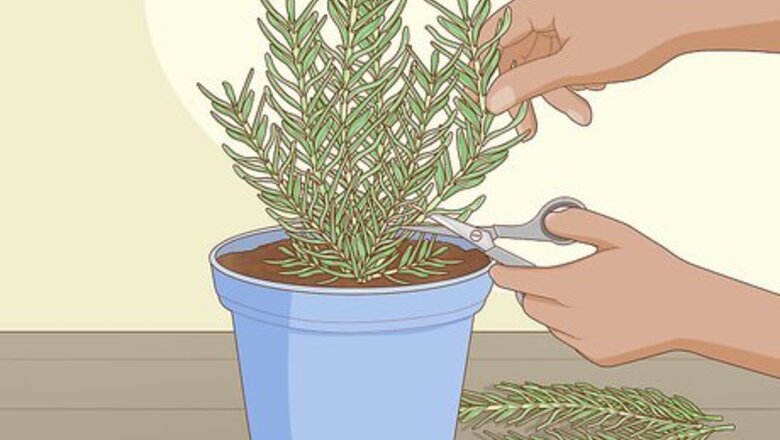
views
Planting Rosemary

Get a rosemary cutting. Rosemary is easiest to grow from a cutting, rather than planting seeds. Visit a community garden and ask for a cutting, or ask a friend for a cutting of their plant. After you find a rosemary plant, clip off a few 4 inch pieces to propagate. The best time to do this is in the late spring, but if you live in a warmer climate, this can be done during early autumn as well. The plants you'll be able to grow from the cuttings will have the same qualities as the original bush. If you'd prefer to grow a variety you haven't seen in your area, you can order a cutting online or ask your nursery to get one for you. There are many varieties of rosemary, each with slightly different properties. Some grow very bushy and tall, while others tend to trail; some have purple or blue flowers, some white. You can also buy a seedling or small plant from a nursery if you don't want to propagate a cutting.
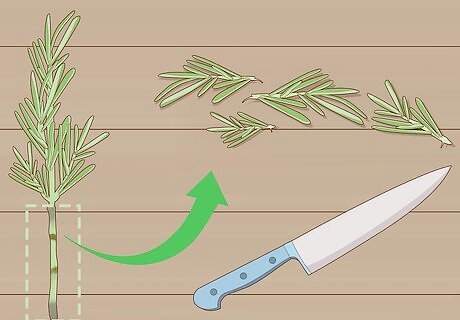
Strip the leaves off the bottom inch of the stem. Before planting the rosemary, strip the leaves off of the lower section of the cutting (about an inch from the end of the stem). This part of the plant will go into the soil. It is important to strip these leaves because leaving these leaves on will cause the stem to rot instead of grow.
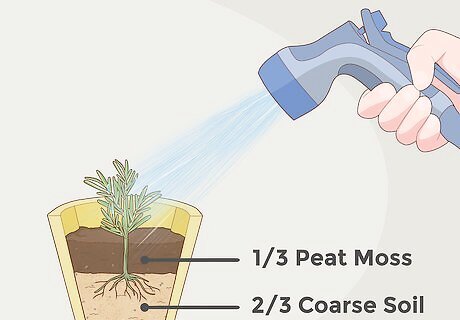
Propagate the rosemary. After you have stripped the leaves, put each cutting into a small pot of soil filled with two-thirds coarse sand and one-third peat moss. Set the pot in a sunny place, but not in direct sunlight. Water the cuttings regularly and keep in a warm spot until the roots form, which should take about three weeks. To help the cuttings grow, you can place the entire pot inside a plastic bag with a few holes punctured in the top. This will help regulate the temperature and keep things warm and moist. You may also dip the tips of the rosemary cuttings in rooting powder to give them a head start.
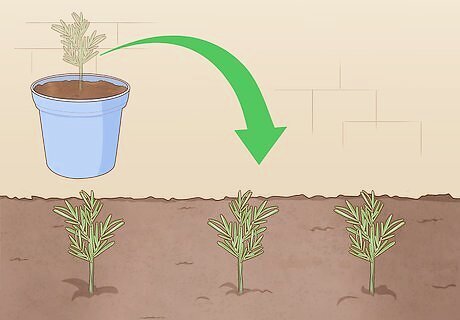
Plant the seedlings. Once roots have formed, you can plant the rosemary either in pots or outdoors in your garden. Rosemary will adapt to most growing conditions and is quite hardy. It's happy with snow, limestone, high temperatures, by the seaside, and all sorts of soils. It will grow its best however, in a warm to hot, fairly dry climate. Choose a full sun aspect that is fairly dry. Decide whether you want to keep growing it in pots or as a shrub in the garden. It can also be trained as a delightfully scented hedge. For cooler climates, containers may be best so that you can move them if needed. If planting in the garden, pot the cutting up once so it can establish more roots and gain strength before planting it outside. Then, choose soil that drains well. Rosemary can suffer from root rot in waterlogged soil. The more alkaline the soil, the more fragrant the rosemary will be. Dig in some lime if the soil is too acid.
Caring for Rosemary
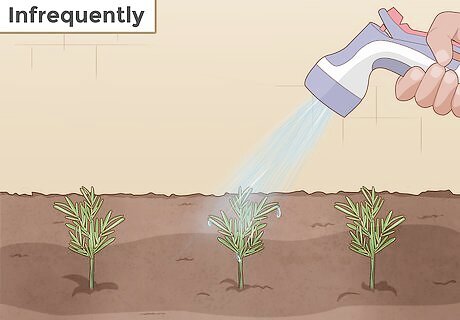
Water rosemary infrequently. Rosemary prefers a drier soil, so don't overdo the watering. It will be happy with the average garden watering. It likes to source most of its water from rain.

Don't worry about fertilizing. This is not an herb that needs it. However, make sure that there is some lime in the soil.
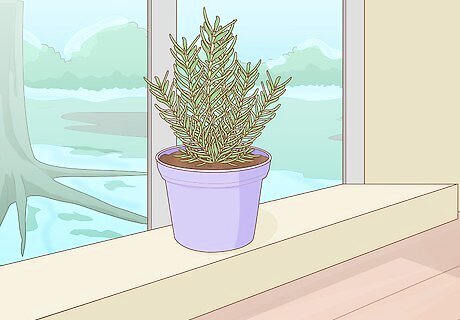
Bring the pots indoors in winter if you live in a cold place. Though rosemary is hardy, it can suffer in very cold weather (lows of 0 degrees Fahrenheit or less) and its branches can get damaged when laden with heavy snow. To ensure the plant survives the winter, it's best to bring it indoors. If your winter lows do not get down to 0 degrees F, then you do not have to do this.

Prune rosemary as needed. Pruning isn't necessary for the health of the plant, but rosemary bushes tend to grow quite large and take up a lot of garden space. Cut the branches back by a few inches each spring to help them retain their shape.
Harvesting and Using Rosemary
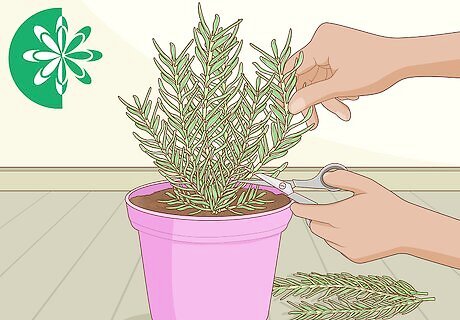
Harvest rosemary. Pick sprigs of rosemary leaves as needed. The bush will just keep on happily growing. Since rosemary is evergreen, you can harvest it all year round.

Store the sprigs in a cool, dry place. You can also freeze rosemary by placing it in food storage bags and storing in the freezer. Alternatively, strip the leaves from the stems and store in airtight jars. Stored this way, rosemary will slowly dry and will keep for several months.
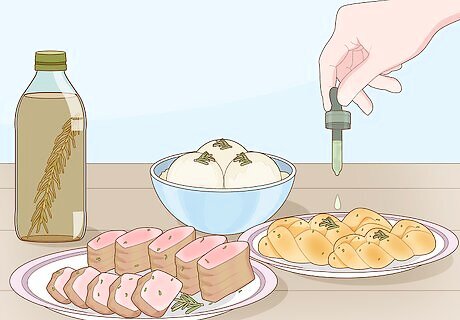
Eat rosemary. Rosemary is a wonderful compliment to both sweet and savory dishes. Use it to add depth to meat and chicken, bread, butter, and even ice cream. These delicious recipes make use of rosemary: Herb bread. Marinated pork. Rosemary syrup. Lemon sorbet with rosemary.

Use rosemary around the house. Rosemary can be dried and made into scented drawer sachets, used as in ingredient in homemade soap, turned into a fragranced water that makes your hair shiny and soft, and more. You can also simply brush against your rosemary plant to experience a fresh burst of its uplifting scent.




















Comments
0 comment